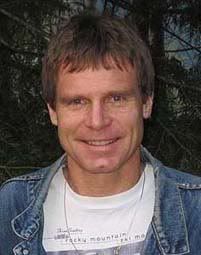Wildlife Biologist Kim Poole On The Impact Of Diamond Mining In Canada
Kim Poole, www.aurorawildlife.com has over 25 years of professional wildlife experience in the public and private sector throughout western Canada, with extensive experience in the Northwest Territories where diamond mining is taking place.
His work focuses on wildlife research & management, and wildlife habitat management and assessment.
I met him in British Columbia, where we discussed diamond mining issues. These follow up questions were sent via email.
Special thanks to Kim for his willingness to share his perspective.
Marc: Let’s start with your experience studying the impact of diamond mining in Canada. What exactly was the scope of your work around the diamond mines and who employed you?
Kim: I have been involved in environmental monitoring and assessment of diamond mines in the NWT for about 5 years, designing, assessing and reviewing wildlife programs. I have come at this from the perspective of an independent consultant designing and reviewing monitoring wildlife programs, and more recently as a member of the Independent Environmental Monitoring Agency (IEMA), a public watchdog for environmental monitoring of BHP Billiton’s Ekati diamond mine.
Marc: Who owns the land that the mines are on and how are these mines impacting the environment and wildlife?
Kim: I am not certain, but I believe most of the mines are Crown land owned by the Federal government. Mines of this nature have an impact on the environment and wildlife at some scale. The Ekati mine, for example, currently has a 20 km2 footprint. This leads to local displacement of small mammals and birds and impacts to the vegetation. At a larger scale these NWT diamond mines have made great efforts to minimize and mitigate potential impacts to the environment. Some changes to the aquatic and terrestrial systems have occurred, but these are minimized and contained to the greatest degree possible. Thus, while there are still potential impacts that are currently being addressed and uncertainties in the system that require further monitoring, on the whole these mines operate in an environmentally sound manner.
Marc: Can you have a sense of how this economic development is affecting the Native communities, for better or worse?
Kim: Socio-economic impacts are not my specialty, but these mines appear to have produced well-paying, long-term training and employment for Aboriginal peoples in communities scattered across the north. In areas where opportunities for economic advancement are limited, I believe this has tended to smooth the boom and bust cycle of resource development that has occurred in the past in some areas. This obviously has had an impact on the traditional Aboriginal lifestyle practiced by most Northerners until recently.
Marc: I’ve heard from others that Yellowknife is a boom-town which brings on a whole set of problems. Any sense of this?
Kim: I lived in Yellowknife for 15 years in the 1980s and 1990s, leaving just as the Ekati mine, Canada’s first diamond mine, was being constructed. Situated where it is, and depending heavily on resource extraction (the town was built on two gold mines), Yellowknife has always had a frontier/boom-town flavour. The diamond mines have definitely intensified this milieu.
Marc: Diamond mining is expanding in the region. What do you view as the critical, ongoing environmental risks as mining expends?
Kim: The main risk is to ensure that the cumulative impacts of all human activity do not adversely affect the environment, specifically wildlife. Any one mine on its own may produce relatively minor, localized impacts, but in concert with all other activity, all these sources of development (mining developments, communities, camps, lodges, etc.) may exceed some threshold that could cause negative impacts. Some wildlife in the north have huge annual ranges that have the potential to interact with sources of disturbance across a broad area.
Marc: In your opinion, are all mines the same in terms of impact on the environment, or are some better managed than others? What I’m trying to understand is whether or not a particular site has a more onerous reputation than other sites.
Kim: In this day and age, I suggest all mines in the North have environmental standards that are far superior to those which occurred in the past. There are a multitude of regulatory requirements, licenses, and permits that are required to construct and operate a mine, and a host of regulatory agencies that monitor this process. That said, each company has a subtly different approach to the process, which means that some are indeed easier to work with and better managed than other.
Marc: Would you recommend a Canadian diamond to your environmentally activists friends?
Kim: If a diamond is in someone’s plans, yes, without hesitation.
Marc: Anything else that you’d like to ad?
Kim: Readers may wish to visit the IEMA website for updates on our review of the environmental program at Ekati. Similar websites are available for the other 2 operations diamond mines in the NWT (Diavik and Snap Lake).

